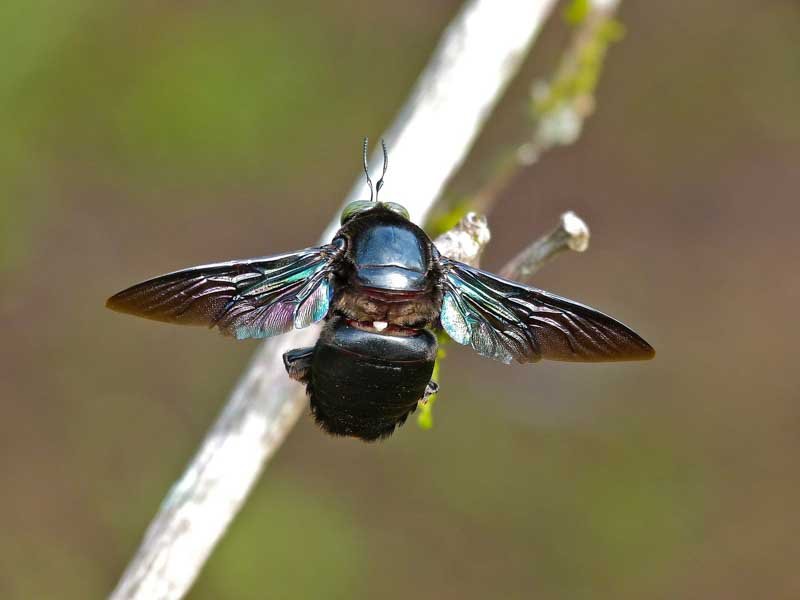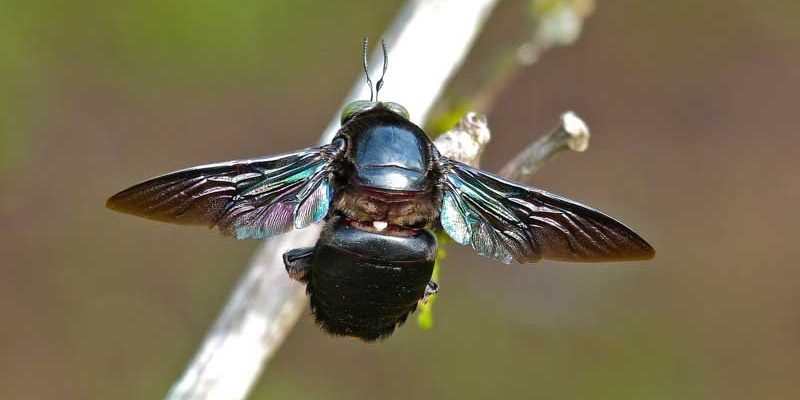
So, what are the biggest threats to these bees? Honestly, it’s like a wildlife documentary playing out in your backyard. Carpenter bees, especially the males, don’t sting, making them seem harmless. Yet, they still face a variety of dangers from both nature and human activity. Let’s dive into the world of carpenter bees, understand their challenges, and perhaps learn a bit about why protecting them is important.
The Role of Carpenter Bees in the Ecosystem
Before we talk about threats, it’s essential to understand what makes carpenter bees special. These bees are solitary pollinators, meaning they don’t live in hives like honeybees. Instead, each female sets up her own nest, often in wood, which can lead to the infamous “tunneling” that we sometimes see around our homes. This nesting behavior is important as it helps with the growth of many flowering plants, ensuring a healthy environment.
Their role as pollinators cannot be overstated. As they flit from flower to flower, they help in the reproduction of plants, which ultimately supports our food supply. Imagine a world without fruits and vegetables—pretty bleak, right? By understanding their impact, we can appreciate why protecting them from threats is so crucial.
Predators of Carpenter Bees
When it comes to predators, carpenter bees have several natural enemies. Birds, particularly woodpeckers, are one of their most significant threats. These skilled hunters can peck away at wood to expose the carpenter bees and their nests. Watching a woodpecker in action is like witnessing nature’s perfect predator-prey dynamic.
Besides birds, you also have various insects that endanger carpenter bees. For example, wasps and hornets aren’t just wasps of annoyance; they actively hunt bees for food. Some parasitic bees lay their eggs inside the carpenter bee nests. When the larvae hatch, they consume the carpenter bee larvae, leading to a tragic end for these industrious pollinators.
Human Impact and Habitat Loss
Humans are often the most significant threat to carpenter bees. Deforestation and urbanization play a huge role in habitat loss. As we build new structures and develop land, we disrupt the natural spaces where bees thrive. Think about it: if you suddenly had to leave your home because someone decided to build a shopping mall in your backyard, you’d be pretty upset, right?
Additionally, the use of pesticides can be devastating. While we might spray for pests in our gardens, we’re sometimes unintentionally harming carpenter bees and other beneficial insects. These chemicals not only kill bees but also disrupt their reproductive systems, leading to dwindling populations.
Competition for Resources
Another significant issue for carpenter bees is competition for resources. They often find themselves competing with other bee species for food and nesting areas. With the rise of *honeybees* and *bumblebees*, the pressure increases for carpenter bees. These other bees tend to be more aggressive and can out-compete carpenter bees for nectar from flowers.
This competition is exacerbated during peak pollination seasons, where food resources become limited. If flowers are scarce, it could lead to starvation for carpenter bees. Imagine trying to share a slice of cake with multiple friends—there might not be enough to go around.
Climate Change and Its Effects
Climate change is another looming threat for carpenter bees. As temperatures rise and weather patterns shift, the natural cycles of flowering plants are disrupted. If flowers bloom too early or too late, bees may not find enough food when they need it most.
Moreover, extreme weather events like heavy rainfall or drought can directly affect their habitats. Carpenter bees need specific environmental conditions to thrive. Just like we might seek comfort in a warm sweater during a cold snap, bees need their ideal conditions too. A shift in these conditions can lead to stress and decline in their populations.
How to Help Carpenter Bees
So, you might be wondering, “What can I do to protect these little heroes?” Fortunately, there are several actions you can take. Planting native flowers in your garden is a great start. Native plants provide an excellent food source, and they’re better suited to your local environment.
Creating bee habitats is also crucial. Leaving some wood untreated in your yard can offer nesting spots. Just like leaving out a cushion for a tired friend, it gives carpenter bees a safe place to rest. Finally, try to limit the use of pesticides. Opt for natural pest control methods whenever possible, as this helps preserve not only carpenter bees but all beneficial insects.
Carpenter bees are remarkable pollinators that contribute significantly to our ecosystem. While they face numerous threats—from predators to human activity—there are ways we can help them survive and thrive. By understanding their challenges, we can become better stewards of our environment.
In a world where every small action counts, simple changes in our gardening and lifestyle can make a difference. Just like the tiny bees who diligently work to keep our plants flourishing, we too can play our part in ensuring their future. With a little awareness and effort, we can create a more welcoming world for these charming creatures.

